Stepping from Dickson Road into the recently reopened Wanderlust offers welcome respite from the afternoon heat: The shady entryway opens into an expansive lobby, where the furniture is comfortable, the color palette soothing, and the atmosphere inviting — it’s tasteful and sophisticated but in no way grandiose.
“We’ve received a lot of intrigue, particularly during renovation, and positive support from the Jalan Besar community, and the reaction from our very first guests, both local and international, has been really encouraging,” says Mr. Ashish Manchharam, founder and managing director of 8M Real Estate, which launched the accommodation concept.
Despite the unexpected COVID-19 situation exerting a negative impact on its opening, Wanderlust has seen an uptick in staycation guests, he adds. “And what better spot to explore than the vibrant neighborhood of Little India?”
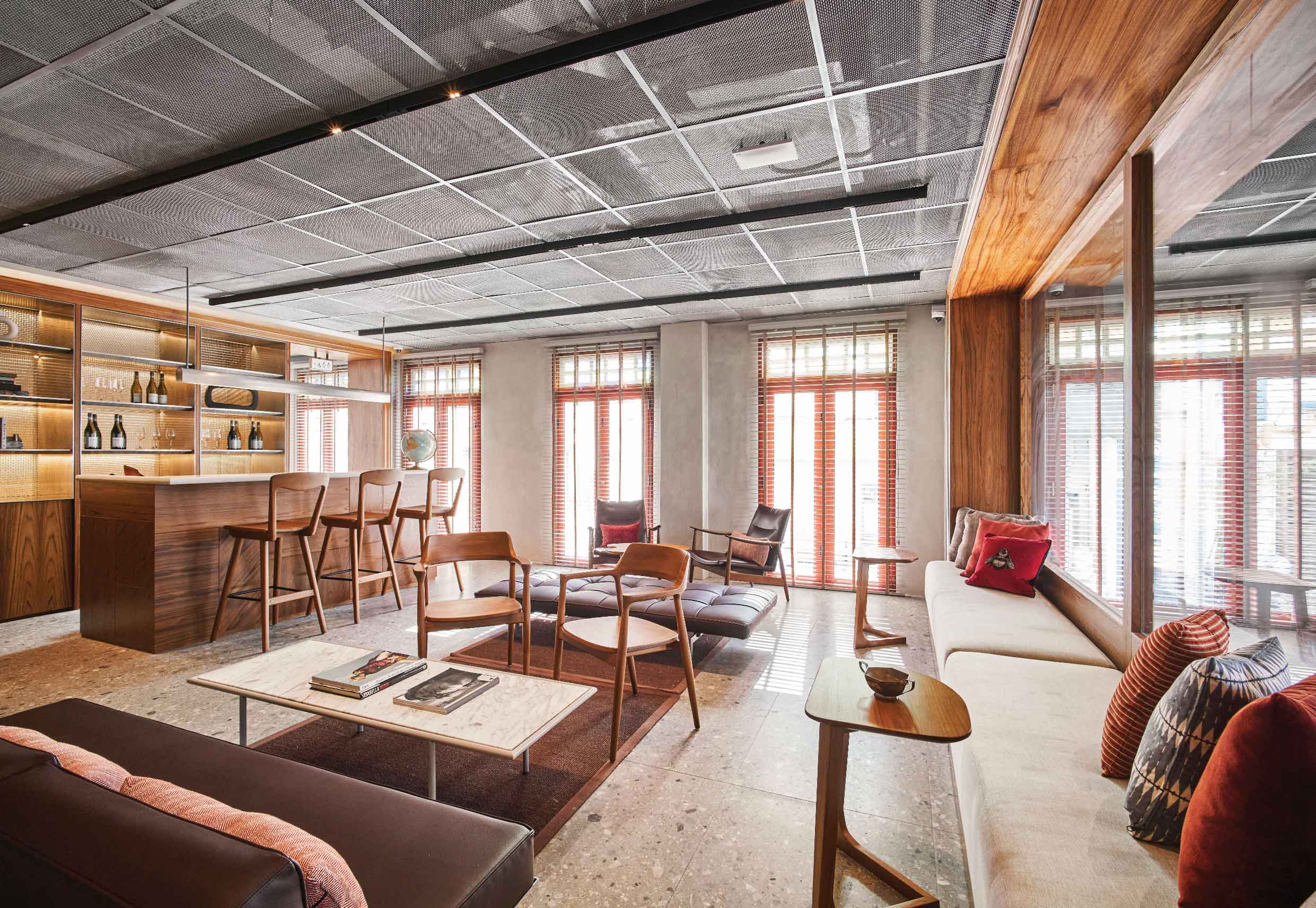 “Our vision is very different from the previous Wanderlust, and our design ethos stemmed from the slow travel mindset, creating a home away from home, almost a refuge, for our guests after they take in the colorful sights and sounds of Little India — an inviting contrast to our locale,” Mr. Manchharam says. “That’s why we used neutral earthy tones throughout and natural wooden textures for a welcoming, calming vibe.”
“Our vision is very different from the previous Wanderlust, and our design ethos stemmed from the slow travel mindset, creating a home away from home, almost a refuge, for our guests after they take in the colorful sights and sounds of Little India — an inviting contrast to our locale,” Mr. Manchharam says. “That’s why we used neutral earthy tones throughout and natural wooden textures for a welcoming, calming vibe.”
Housed in a 1920s art deco building in the Little India neighborhood, Wanderlust reopened this February following an extensive renovation, which transformed it into a flexible living concept that accommodates both short- and long-term stays. Its four floors house 29 rooms divided into five categories, representing lofts, studios and rooms.
Other facilities and features include a complimentary laundry service, an onsite Mama Shop offering a selection of locally sourced products for guests to prepare in their in-room kitchenettes; and Kotuwa, a Sri Lankan restaurant and bar helmed by chef Rishi Naleendra of Cheek Bistro and Cloudstreet that is slated to open this month.
“[Rishi and I] have always talked about the gap in market for Sri Lankan food, so when we were developing the Wanderlust concept, we re-engaged the conversation about a modern take on this cuisine for the ground floor,”
Mr. Manchharam says. “The location made it that little bit more interesting, serving Sri Lankan flavors in Little India.”
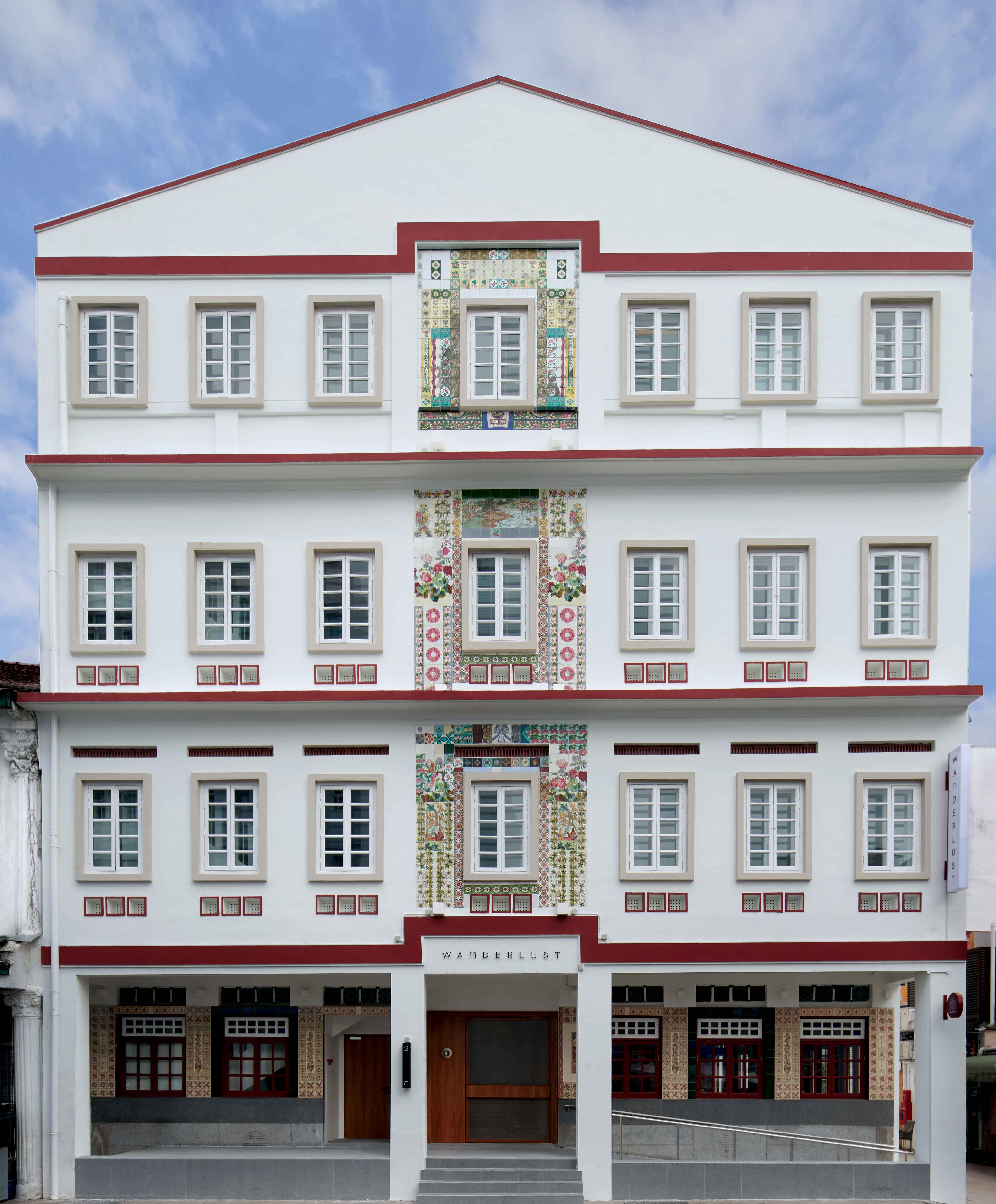 The original Peranakan tiles and stained-glass windows were retained to connect the revitalized building with its history
The original Peranakan tiles and stained-glass windows were retained to connect the revitalized building with its history
Modernizing a hundred-year-old conservation building to suit the contemporary traveler’s requirements while retaining the character of the property took careful consideration.
Besides changing the decor from eclectically themed rooms, from when the building was a boutique hotel owned and operated by Unlisted Collection, to a more cohesive look, the refurbishment introduced conveniences conceived with traveling professionals in mind, such as work desks, storage solutions and kitchenettes in the majority of the rooms.
The original Peranakan tiles and stained-glass windows that adorn the building façade were preserved too, to maintain the property’s connection to its beginnings as the former Hong Wen School.
Another of the few things retained was the name “Wanderlust” — “Wanderlust has ‘legacy’ within the neighborhood and with locals of Singapore, and we didn’t want to lose this, but instead we wanted to show what a little reimagination could do to bring a fresh perspective to both the hotel and the area,” Mr. Manchharam explains. “Heritage restoration and community rejuvenation lies at the heart of our business, so our accommodation concepts are always extremely considered.”
- PROPERTY BOOM
- HERITAGE HOUSES
- EARLY START
Property Boom
Wanderlust is the latest addition to the 8M Collective, the management company of flexible living concepts with a design focus that represents the accommodation vertical of 8M Real Estate’s business; KeSa House, Ann Siang House and Base Residences make up the other properties within the collective.
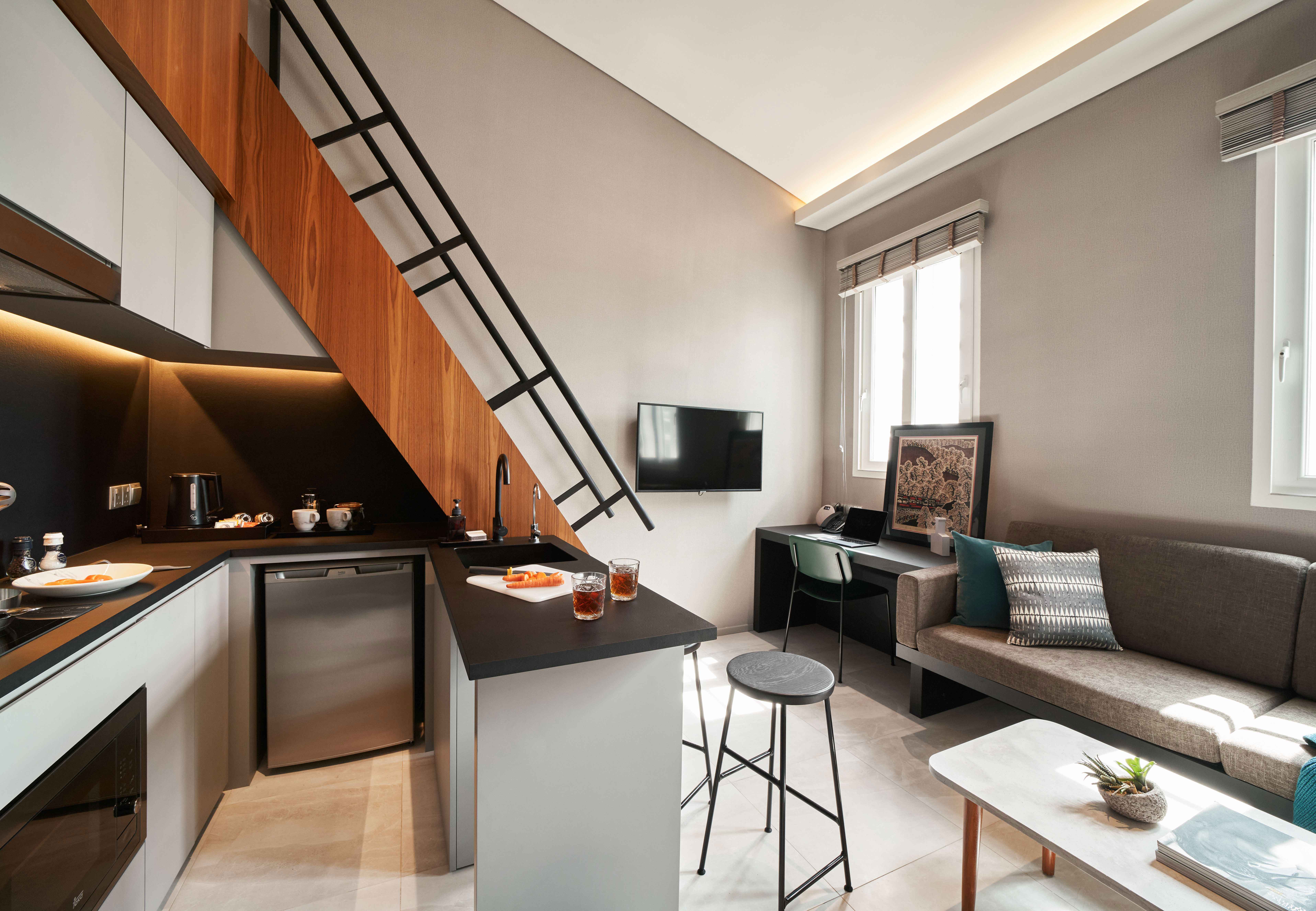 The interior of the Loft suite
The interior of the Loft suite
In recent years, the flexible living trend has grown increasingly widespread, especially among expats and digital nomads. “We’re living ‘on demand,’ with a plug-and-play state of mind when it comes to both work and living environments,” Mr. Manchharam elaborates.
“So convenient, hassle-free solutions need to be readily available to stay abreast with this evolving lifestyle, particularly as the two environments continue to overlap. Although we’ve seen the social need to belong, we’re also seeing the need for personal space and freedom, so it’s about finding the balance.”
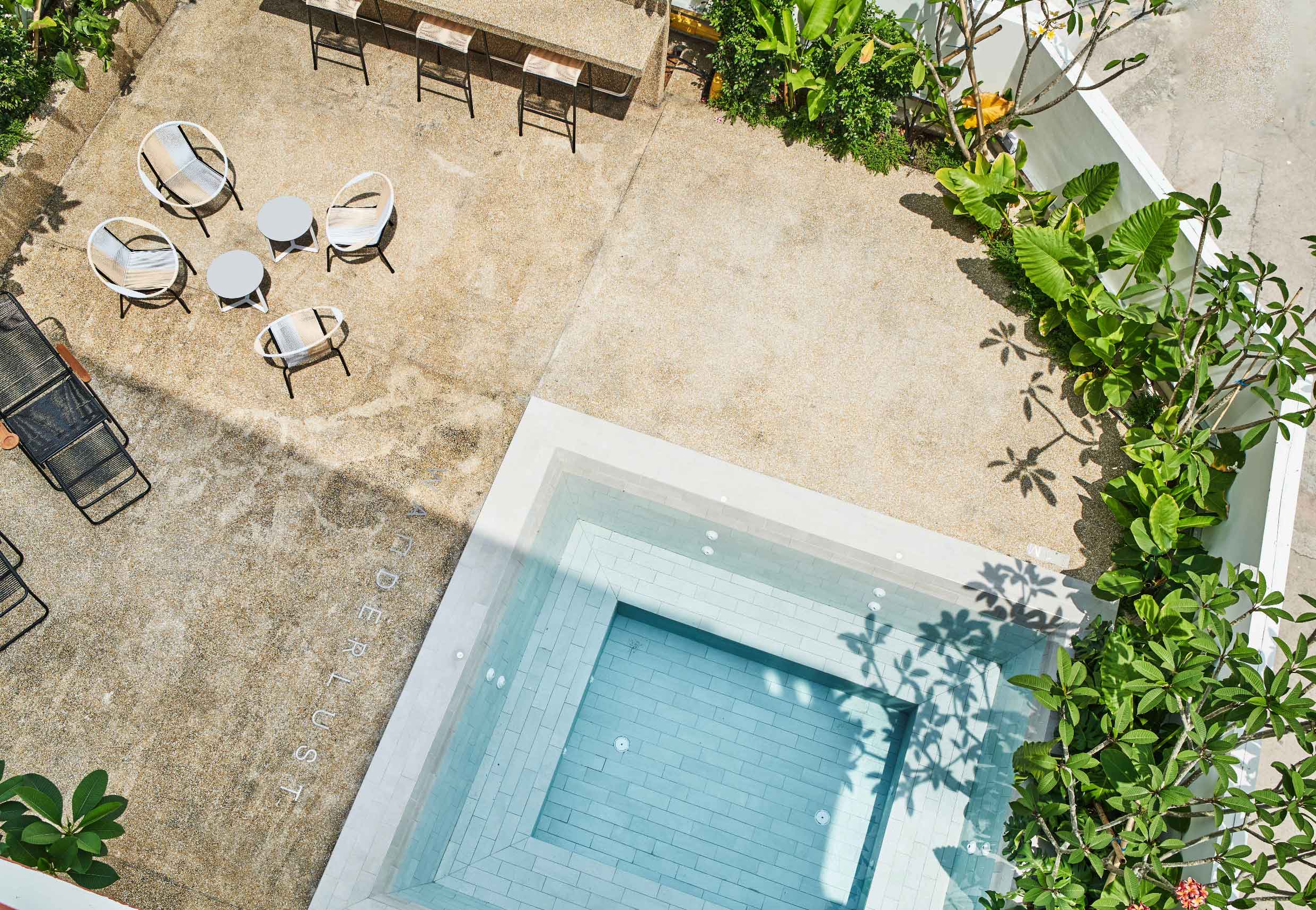 The outdoor dipping pool
The outdoor dipping pool
While 8M Real Estate’s investment team does keep an eye on the market, it also receives opportunities from various avenues, so there is a constant pipeline for new acquisition, Mr. Manchharam says.
“Our key decision-making process is still fairly simple: The first element we consider is location, be it an established or growth area, and the second is the condition of the property itself and the potential to refurbish or reposition it,” he adds. “Ultimately, we have long-term vision, and so we focus on the end user and tenant community and the demand that’s generated from the property and location.”
In the process of transforming an acquisition, in-house teams from investment to branding and operations are involved, while external consultants are referred to when it comes to design and building; 8M Real Estate collaborated with The Farm on Wanderlust and is currently working with WOHA and Takenouchi Webb on forthcoming projects, Mr. Manchharam discloses.
“Each project is inherently different because of the properties’ physical characteristics, location and surrounding community,” he explains. “When we build out the positioning of the project, we engage the right designers and curate tenant partnerships to fit that particular vision, whether the end use is office space, F&B or accommodation.”
- PROPERTY BOOM
- HERITAGE HOUSES
- EARLY START
Heritage Houses
Another portion of 8M Real Estate’s business focuses on reinvigorating and developing gentrifying locations, particularly conservation shophouses in the Central Business District (such as along Amoy Street, Tanjong Pagar Road and Gemmill Lane), for offices and F&B operations. Assets under management amount to approximately S$800 million, and the properties house establishments including Employees Only, Bochinche, Nineteen80, Blue Label Pizza & Wine, and Bar-A-Thym.
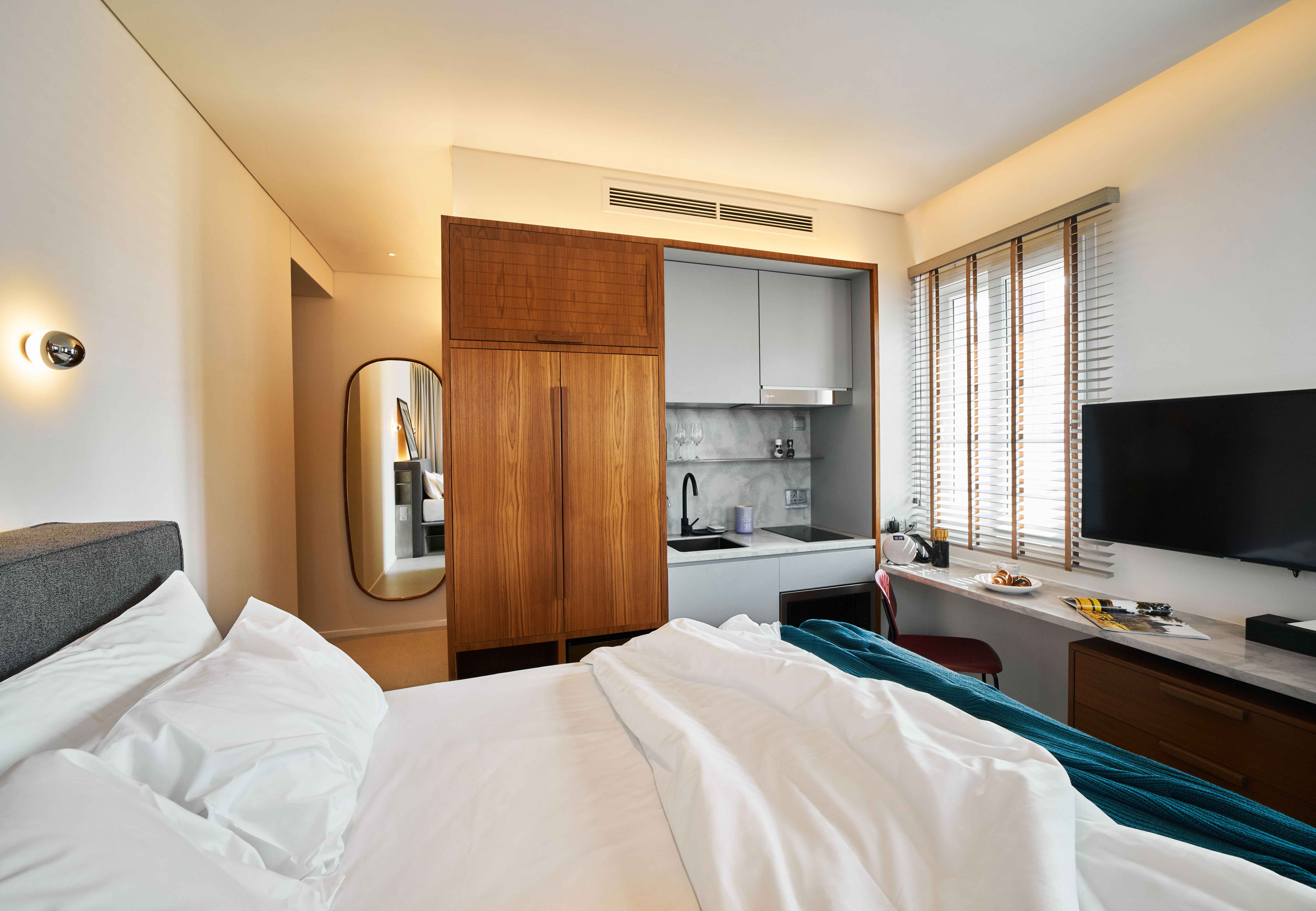 The Junior Studio
The Junior Studio
The Urban Redevelopment Authority has conferred conservation status on nearly 7,200 buildings in Singapore, out of which about 6,760 are shophouses, and 60 percent of the latter figure are located in prime downtown areas.
According to data published by Colliers International for November 2019, shophouse sales volume began inching upwards in 2015 and peaked in 2018, when it registered S$1.5 billion, and the shophouse transaction value in the first 10 months of 2019 reached S$498 million in total for the properties located in the Outram, Rochor, Singapore River, Kallang and Geylang planning areas.
The real estate management company’s report added that shophouses have become more attractive to institutional investors due to their “relatively palatable quantum (S$10–20 million per unit), limited supply and vintage charm,” and the flexibility and control they offer as commercial spaces to tenants and owners in terms of operations, design and purpose.
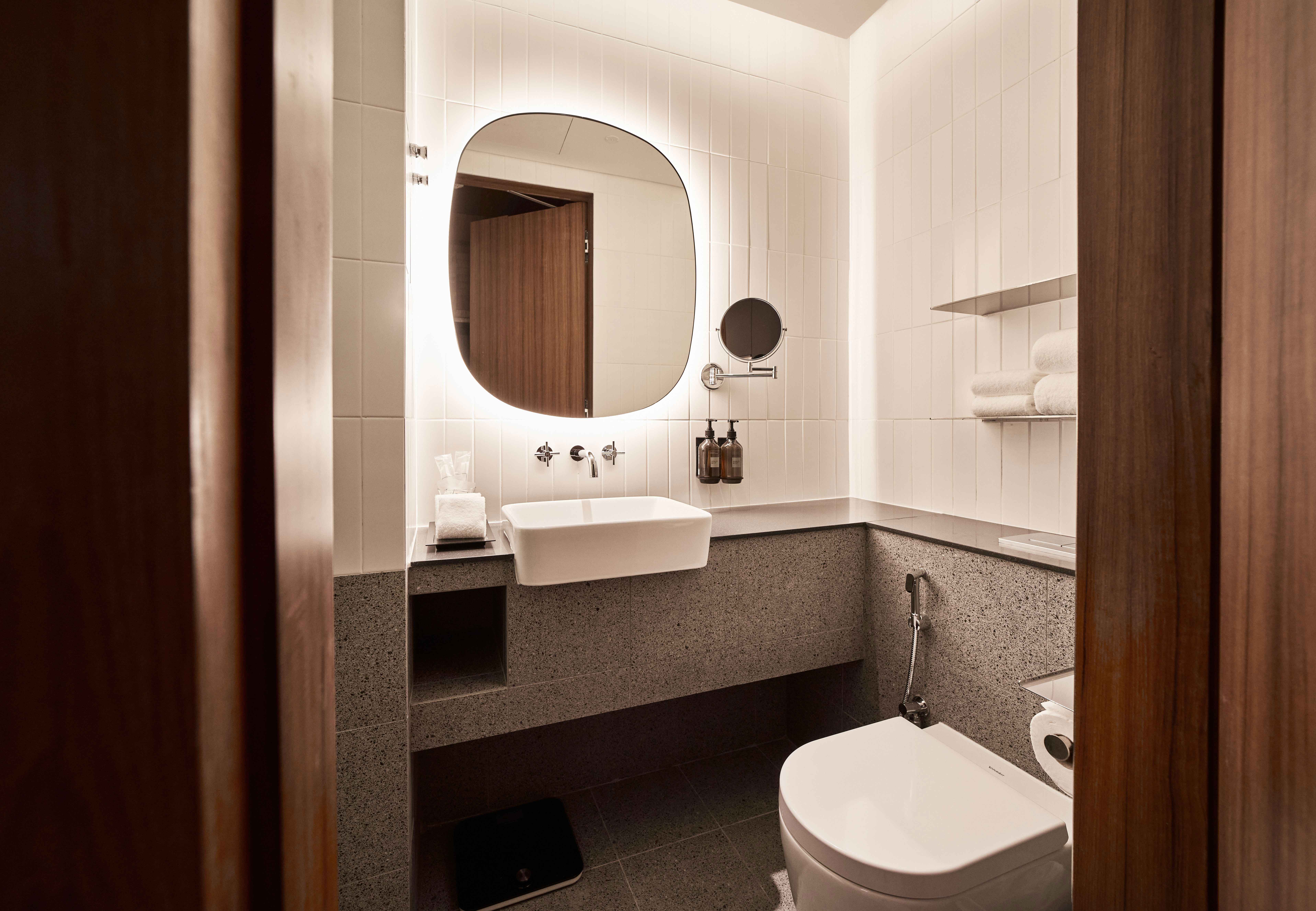
“Being a hybrid of the residential, commercial and hospitality sectors, shophouses are generally less affected by the policy risks or cooling measures in the residential sector. Commercial spaces in shophouses are exempted from the additional buyer’s stamp duty and seller’s stamp duty. Also, the absence of restrictions on foreign buyers and financing, compared to residential properties, makes shophouses a more attractive investment,” the report continued.
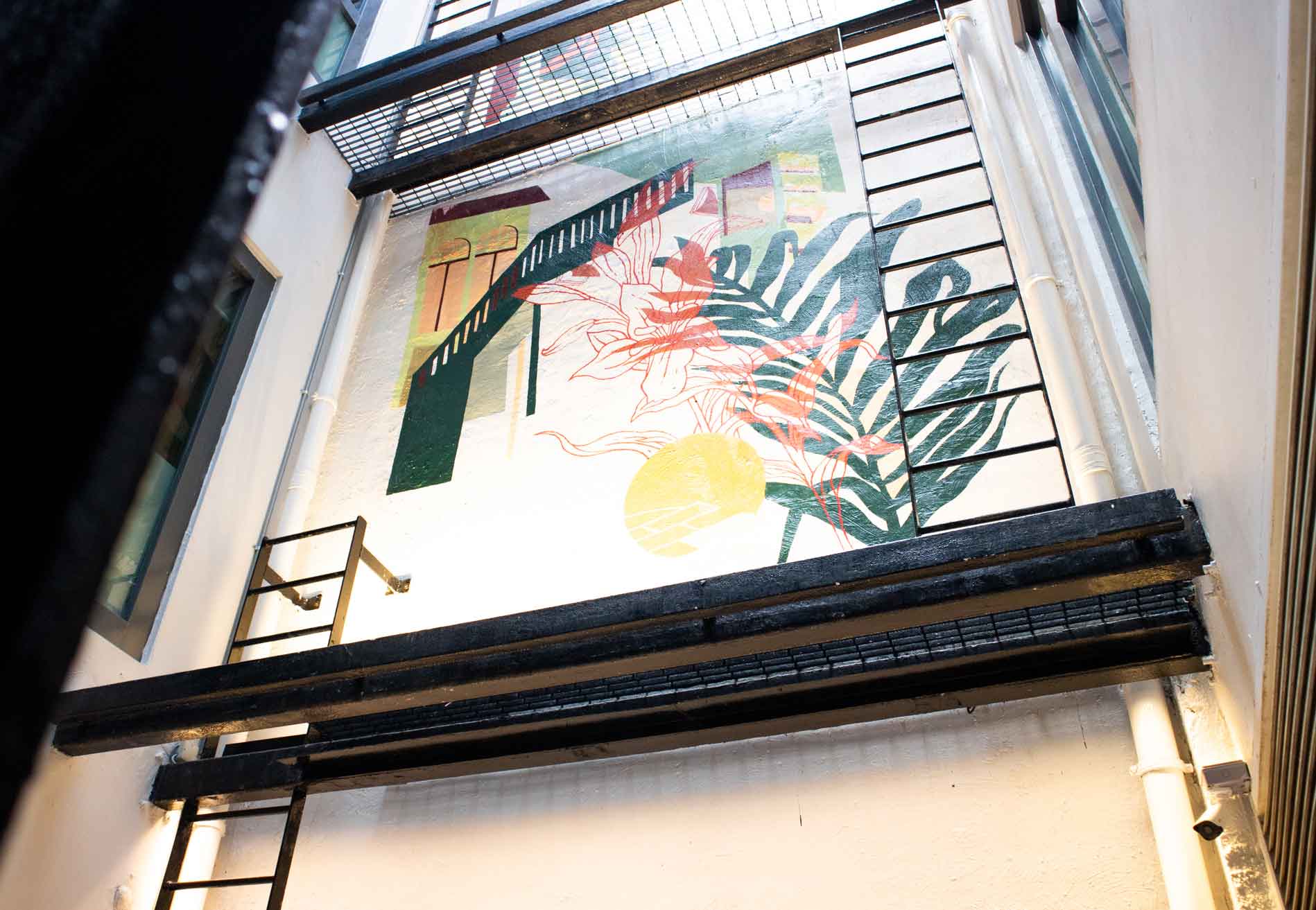 “We want to inject modern storytelling into our design, so we recently engaged The Artling, a local art curator, to create a mural in our airwell (a unique feature of conservation properties extending from the ground floor up to the third floor) that will capture a sense of the building history as a former Chinese school and the surrounding architecture,” Mr. Manchharam says.
“We want to inject modern storytelling into our design, so we recently engaged The Artling, a local art curator, to create a mural in our airwell (a unique feature of conservation properties extending from the ground floor up to the third floor) that will capture a sense of the building history as a former Chinese school and the surrounding architecture,” Mr. Manchharam says.
To Mr. Manchharam, shophouses provide a solid wealth preservation alternative to other investments.
“The pricing has recently outpaced inflation; however, it came from a very low base, and only in the past three to five years have we seen the space become a more acceptable investment asset class,” he adds. “Demand for this product type is likely to continue, while the growth will have to taper given the run out.
“The 8M portfolio consists of only 55 shophouses so far — that’s less than 1 percent of all Singaporean shophouses — so there’s absolutely still growth potential for us with this particular asset class.”
- PROPERTY BOOM
- HERITAGE HOUSES
- EARLY START
Early Start
Mr. Manchharam had always striven to make a career out of property, and the idea of shophouses was an opportunity he noticed and took, he says. He had lived in a Bussorah Street shophouse when he was a child, and witnessing the evolution of Haji Lane in the 2000s into a youth-centric enclave for independent fashion boutiques and cafes helped him understand how an area could be transformed with the clever curation of a like-minded operator community.
“In the early-mid 2010s, I started to see strong F&B operators searching for unique standalone spaces close to the CBD and moving away from the traditional mall and office building sites,” he recounts. “This is when I realized the potential to fuel the demand, and hence 8M began.”
 Ashish Manchharam in a blazer and parka jacket from Hermès
Ashish Manchharam in a blazer and parka jacket from Hermès
In 2014 he left property consultancy JLL, where he had been for 12 years, most recently serving as the head of investments for Southeast Asia, and founded 8M Real Estate together with foreign institutional investors; its first acquisition was the five shophouse units at 112–116 Amoy Street that same year.
Besides the key Asian and global investment players he met during his time at JLL, seeing the market move through different cycles, “and tough ones at that, from the 2001 dot-com crash to SARS in 2003 and then the global financial crisis in 2008, those were significant events that have shaped my investment thesis and thought process,” he adds.
Even though Mr. Manchharam has spearheaded a series of well-received projects by now, he declines to call his achievements a winning streak. “We have a winning formula,” he explains, “combining talent, passion, energy and hard work in all our projects.”






 “Our vision is very different from the previous Wanderlust, and our design ethos stemmed from the slow travel mindset, creating a home away from home, almost a refuge, for our guests after they take in the colorful sights and sounds of Little India — an inviting contrast to our locale,” Mr. Manchharam says. “That’s why we used neutral earthy tones throughout and natural wooden textures for a welcoming, calming vibe.”
“Our vision is very different from the previous Wanderlust, and our design ethos stemmed from the slow travel mindset, creating a home away from home, almost a refuge, for our guests after they take in the colorful sights and sounds of Little India — an inviting contrast to our locale,” Mr. Manchharam says. “That’s why we used neutral earthy tones throughout and natural wooden textures for a welcoming, calming vibe.”
 The original Peranakan tiles and stained-glass windows were retained to connect the revitalized building with its history
The original Peranakan tiles and stained-glass windows were retained to connect the revitalized building with its history
 The interior of the Loft suite
The interior of the Loft suite
 The outdoor dipping pool
The outdoor dipping pool
 The Junior Studio
The Junior Studio

 “We want to inject modern storytelling into our design, so we recently engaged The Artling, a local art curator, to create a mural in our airwell (a unique feature of conservation properties extending from the ground floor up to the third floor) that will capture a sense of the building history as a former Chinese school and the surrounding architecture,” Mr. Manchharam says.
“We want to inject modern storytelling into our design, so we recently engaged The Artling, a local art curator, to create a mural in our airwell (a unique feature of conservation properties extending from the ground floor up to the third floor) that will capture a sense of the building history as a former Chinese school and the surrounding architecture,” Mr. Manchharam says.
 Ashish Manchharam in a blazer and parka jacket from Hermès
Ashish Manchharam in a blazer and parka jacket from Hermès




 Back
Back
